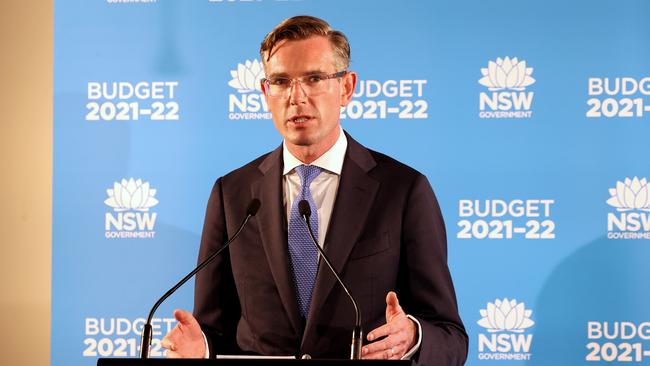Home work key to long-term recovery
Billions of dollars are sunk into stimulating a recovery of regional areas but the larger challenge of getting cities back on track remains.

Billions of dollars have been sunk into stimulating a recovery of regional areas that have been hit by drought and bushfires but the larger challenge of getting cities back on track in the wake of the pandemic remains.
Sydney has been slugged by the slow return of office workers to their desks, which has crimped the recovery of CBD retailers, with the latest Covid-related restrictions further hurting businesses.
While governments have launched numerous initiatives to stimulate a recovery, the budget papers reveal that remote working could actually provide a longer-term economic boost. They also show the government throwing resources at regional areas as the bush deals with flooding and a mouse plague.
The NSW and federal governments have pumped about $10bn into natural disaster and recovery funding, and specific programs include $150m to help deal with the mouse plague and $72.5m for flood recovery.
Treasurer Dominic Perrottet said a $100m regional fund would keep restoring jobs lost in the pandemic and $460m in funding would go to special activation and regional job precincts, which include major projects at Parkes and at Wagga Wagga.
The government is setting up the $2bn Snowy Hydro Investment Fund to back projects on water security, digital, better road and rail connections, and special economic precincts.
Readying for future droughts has emerged as a priority and $862m is going to secure water resources across the state, while more dams are in planning. A $2bn regional growth fund is also supporting new developments and is focused on smaller projects, with about 2100 under way across the state.
But the dramatic impact of the coronavirus-related restrictions could have the greatest potential to impact the economy.
The budget papers warned that central business districts continue to suffer adverse economic impacts. Sydney accounted for about $130bn or 21 per cent of the NSW economy. But it has been slugged by the absence of tourists and fewer shoppers.
The shift towards working from home has savaged passing trade in city centres and a NSW government report said that remote working could stay 69 per cent above pre-pandemic levels, indicating not all workers will return to the office full-time.
Plans to turn the fortunes of the NSW capital around include the $40m CBD revitalisation program, $20m for accommodation vouchers and $50m in Sydney CBD vouchers.
But in a seeming break with concerns about the health of the city economy, the budget papers put forward a scenario in which remote working becomes a more permanent feature. This could drag more women and older workers back into the workforce and mean that less office space is required. Workers would also put in longer hours at home, boosting their output.
The lift to forecast economic growth could be significant. “The overall impact of technology and remote work across the economy is estimated at around a 1 per cent increase in gross state product,” the budget papers said.
The overall size of the economy would lift due to more flexible work arrangements, and total revenues would be $4.2bn higher over five years on the back of higher payroll tax and transfer duty tax as stronger house prices continued on the back of demand for larger homes.




To join the conversation, please log in. Don't have an account? Register
Join the conversation, you are commenting as Logout